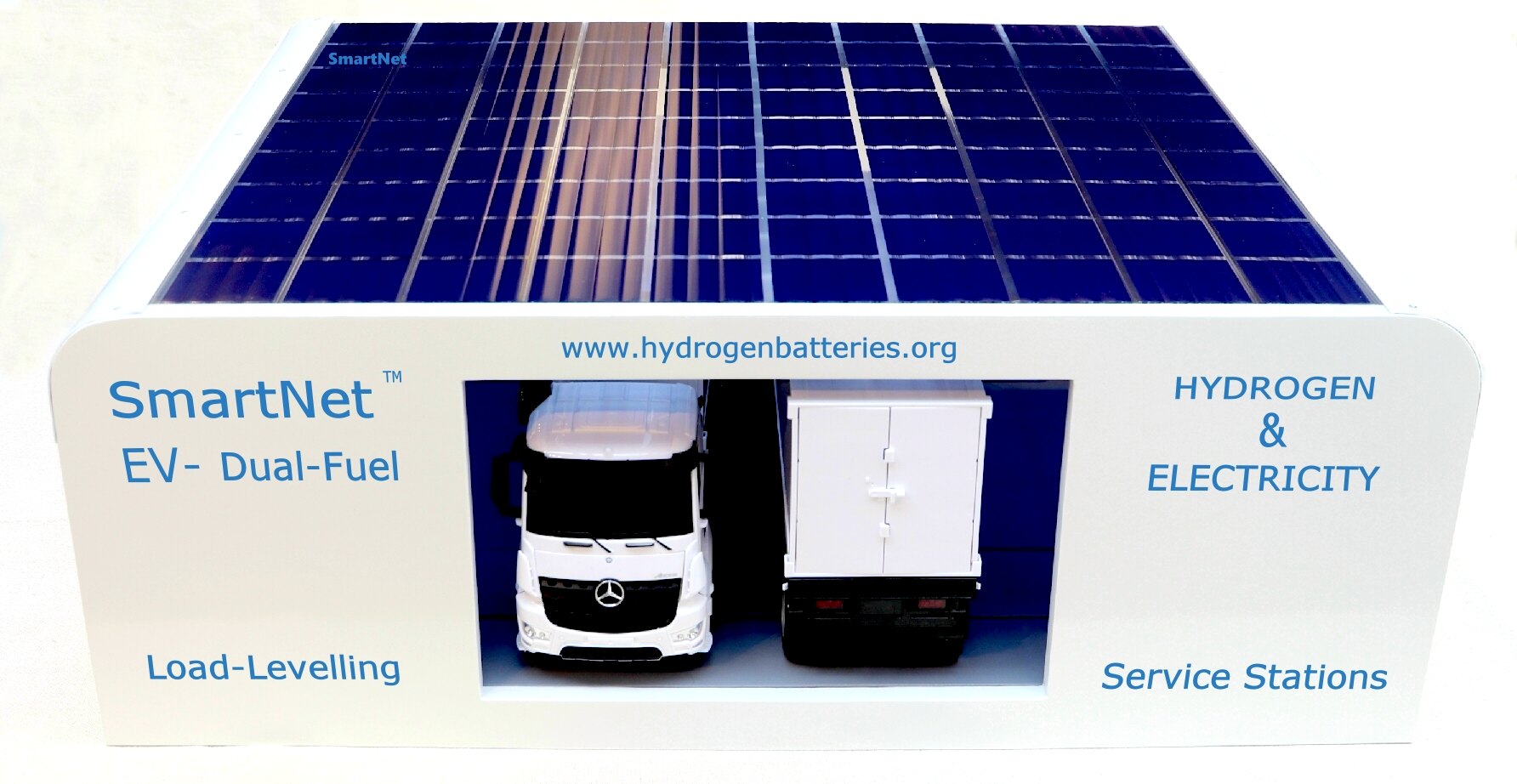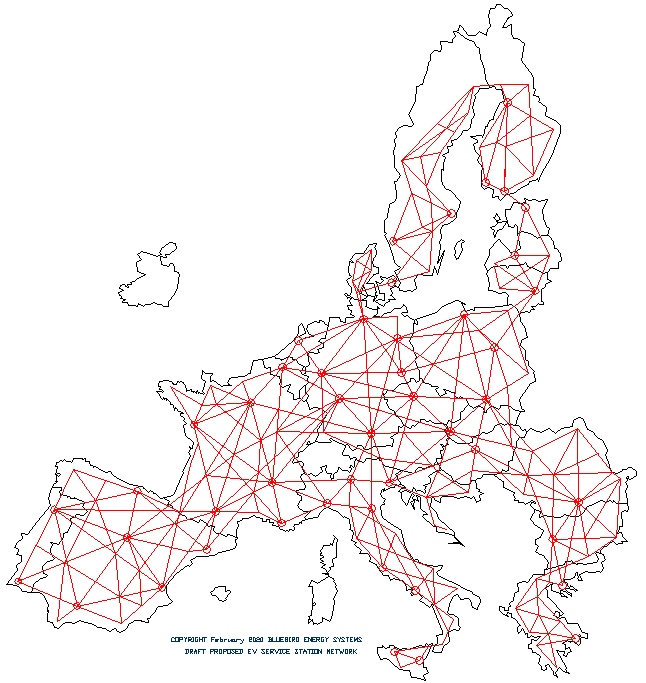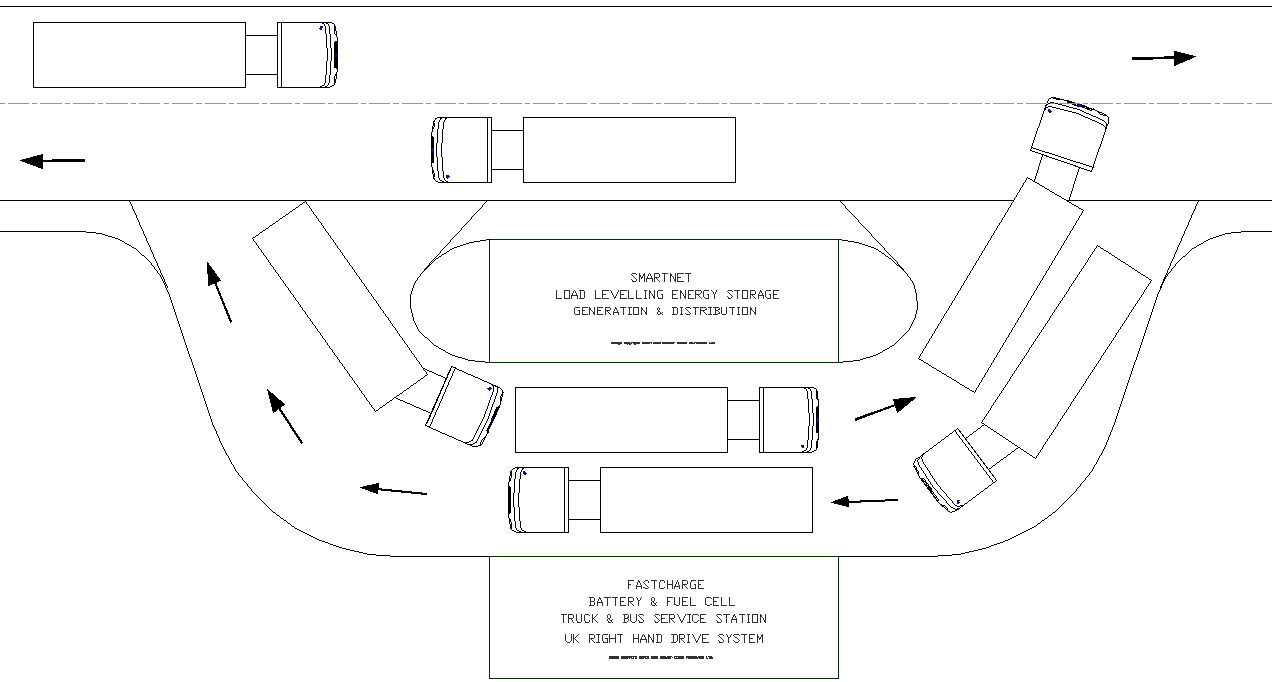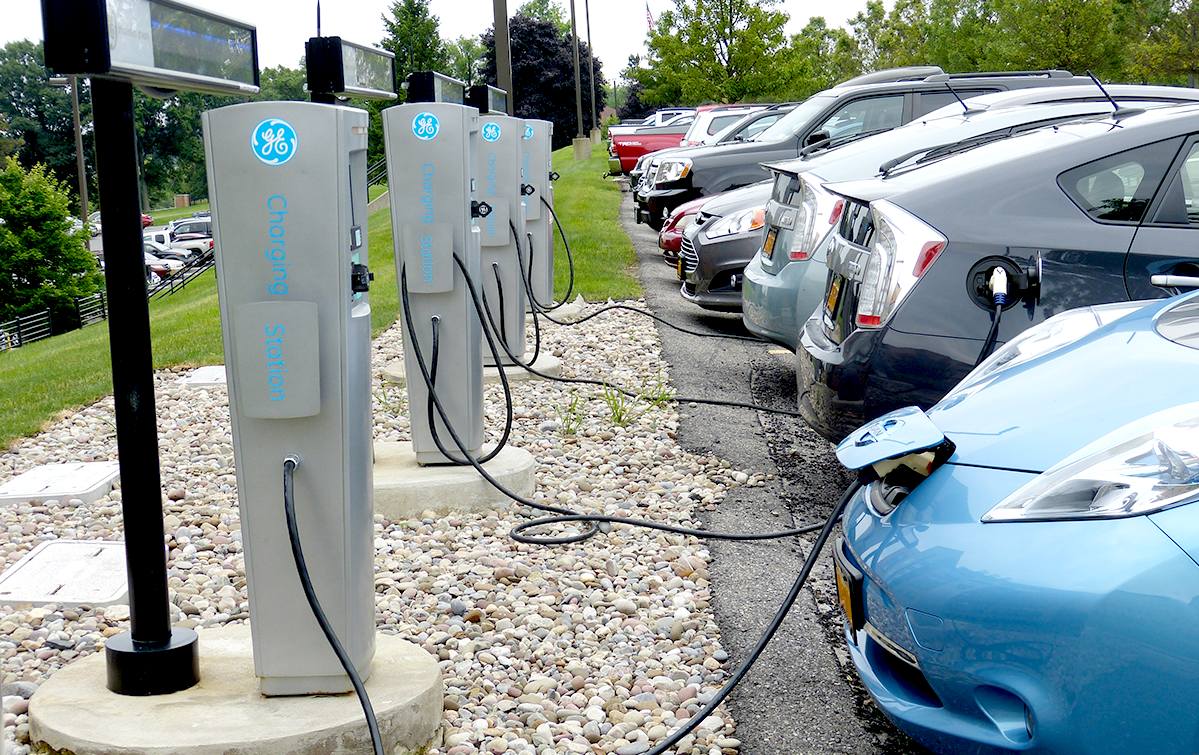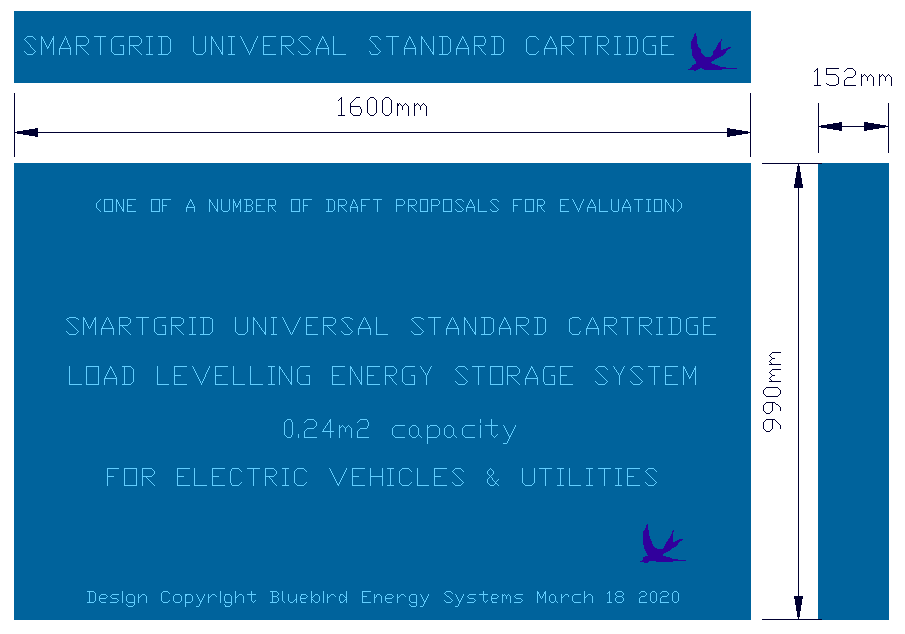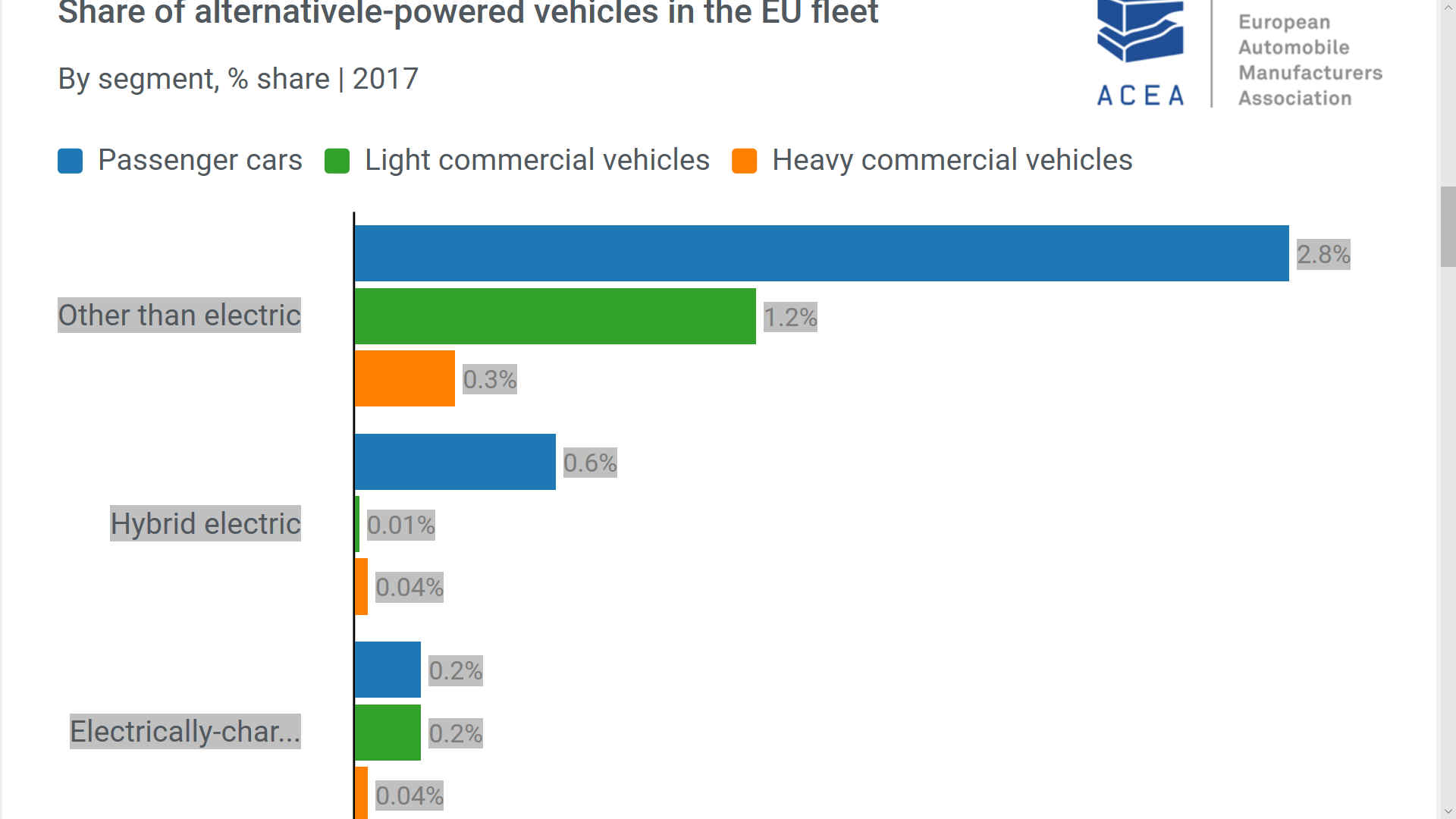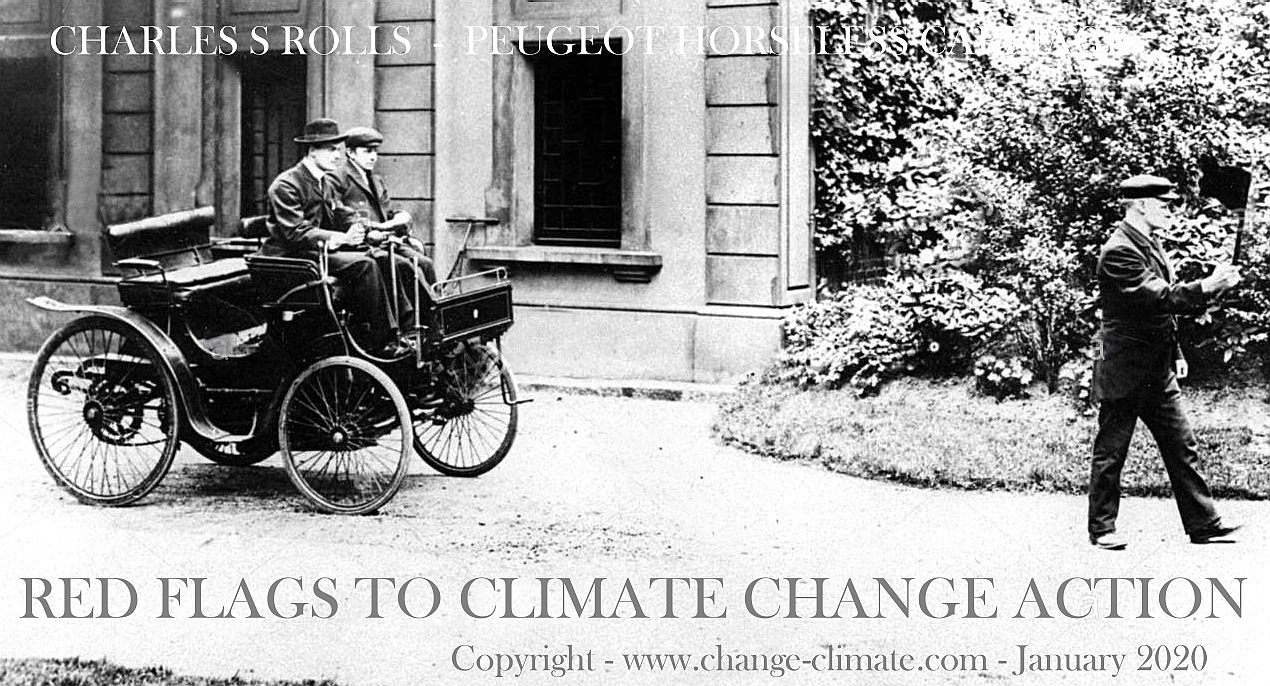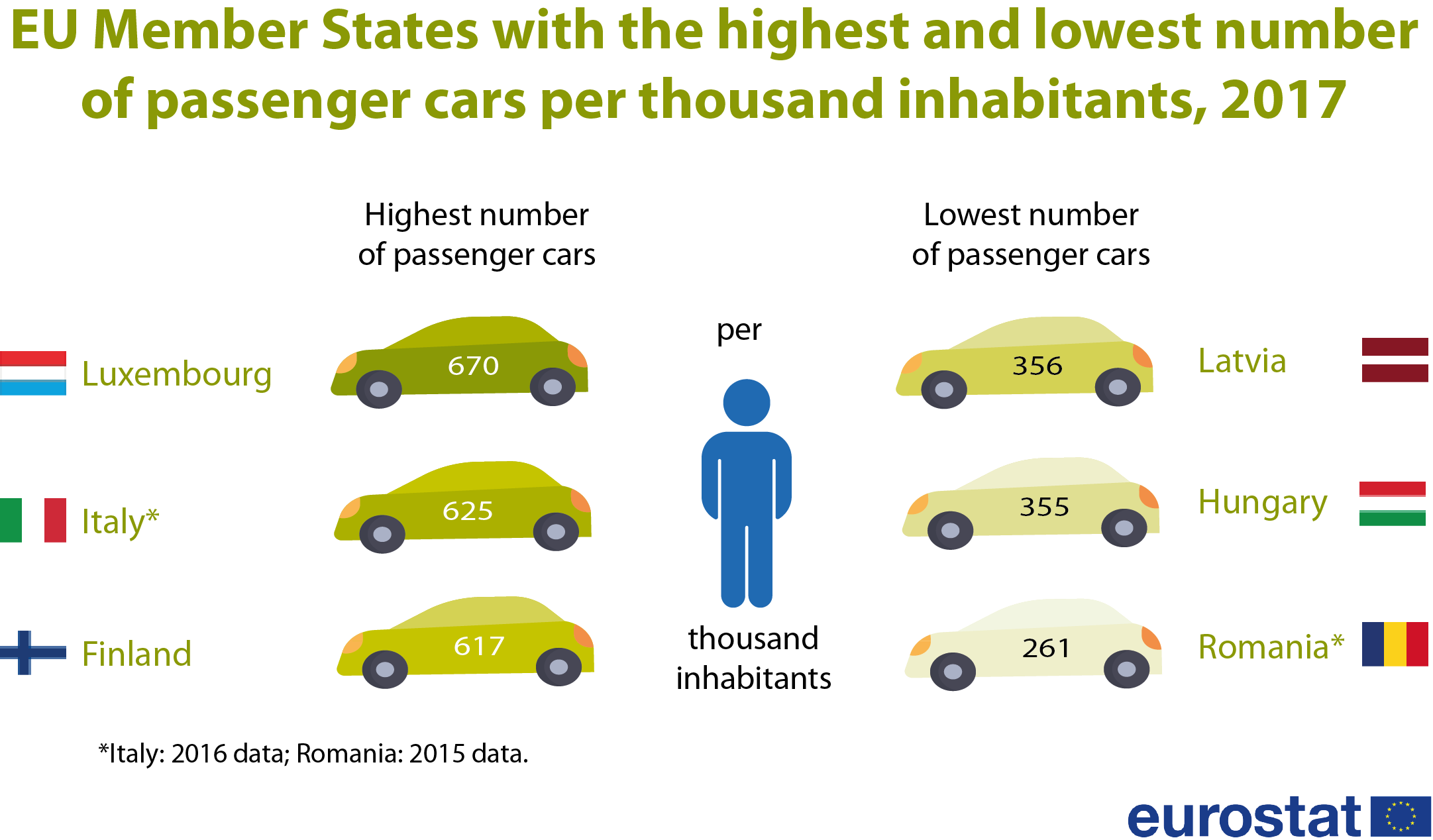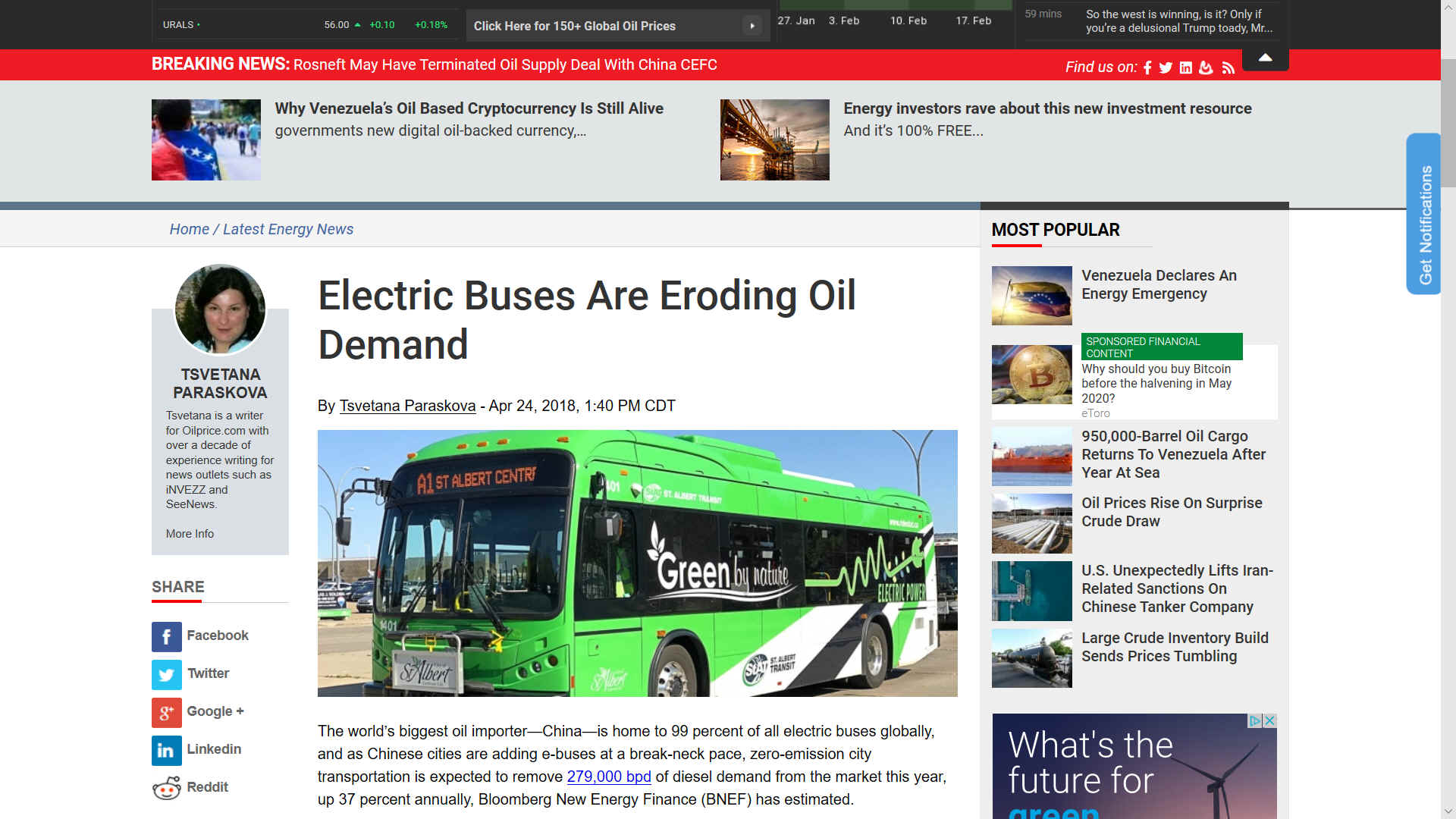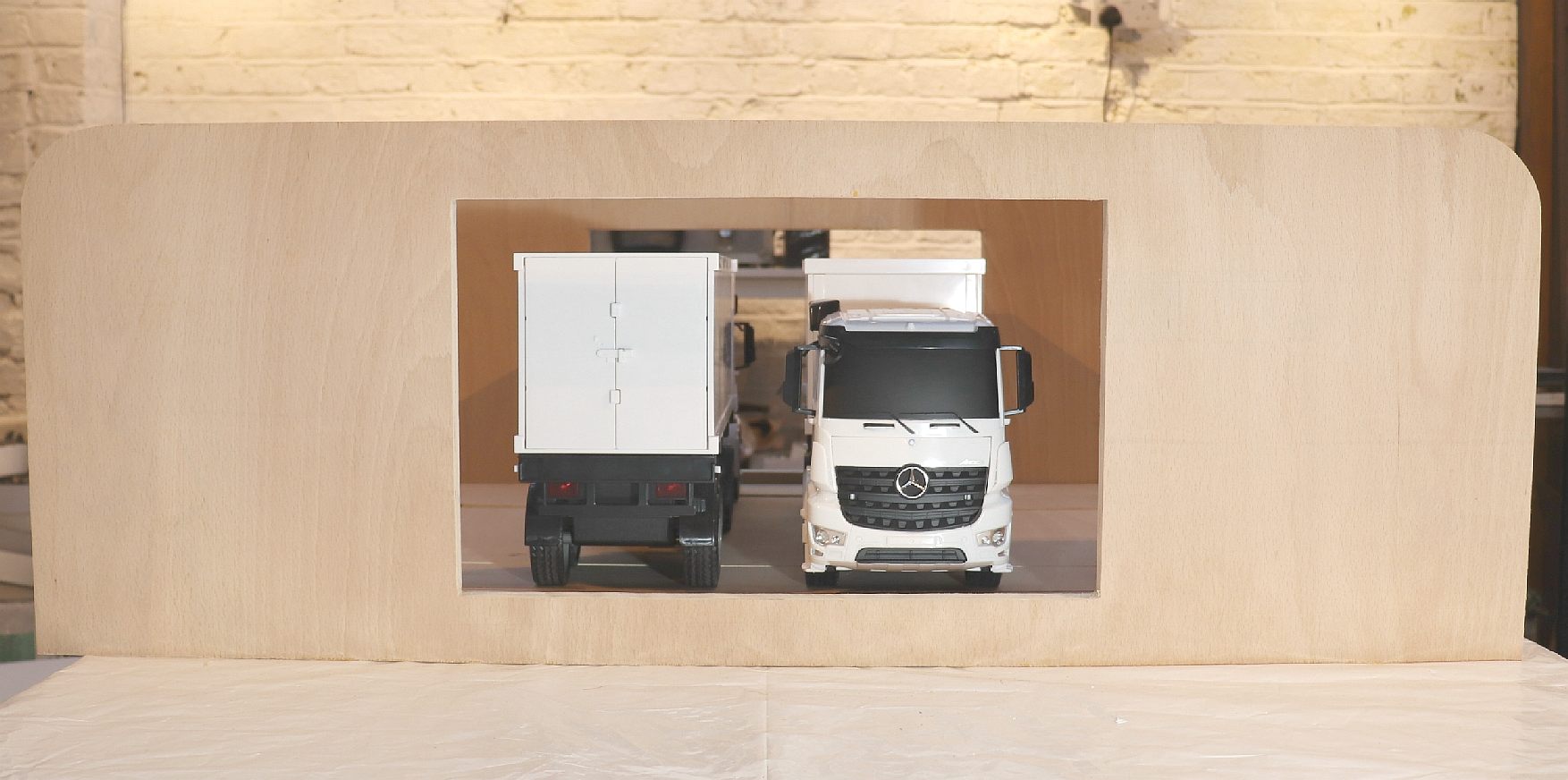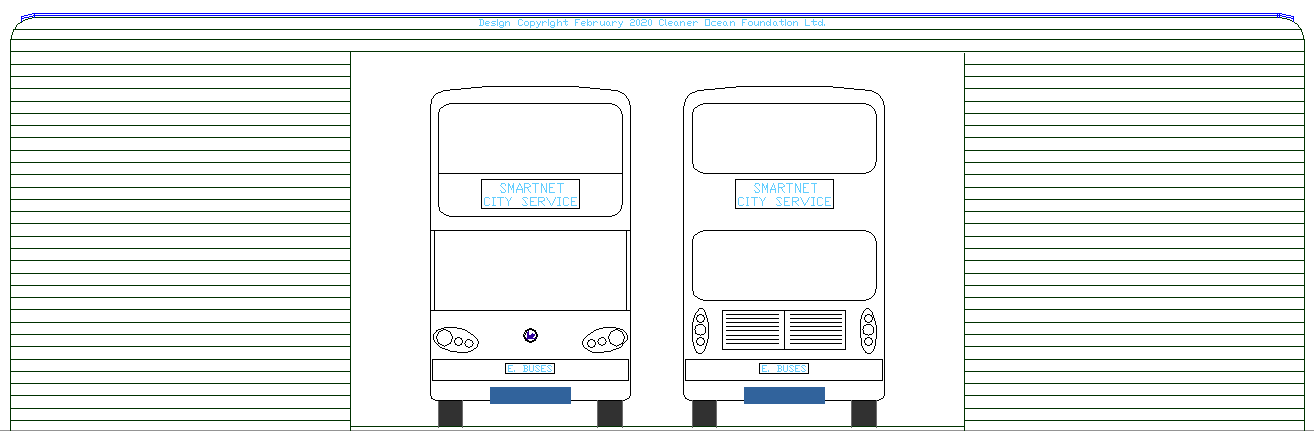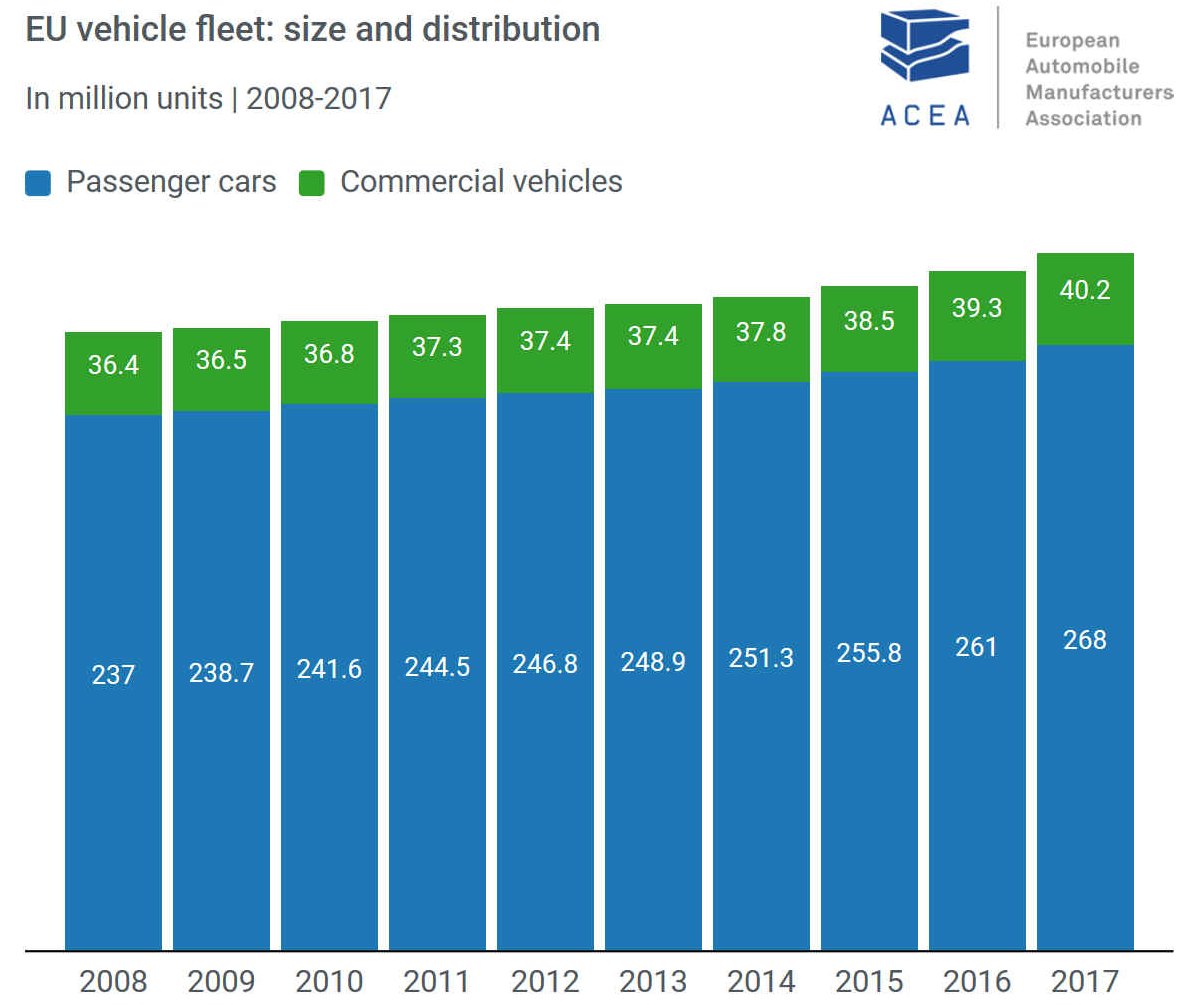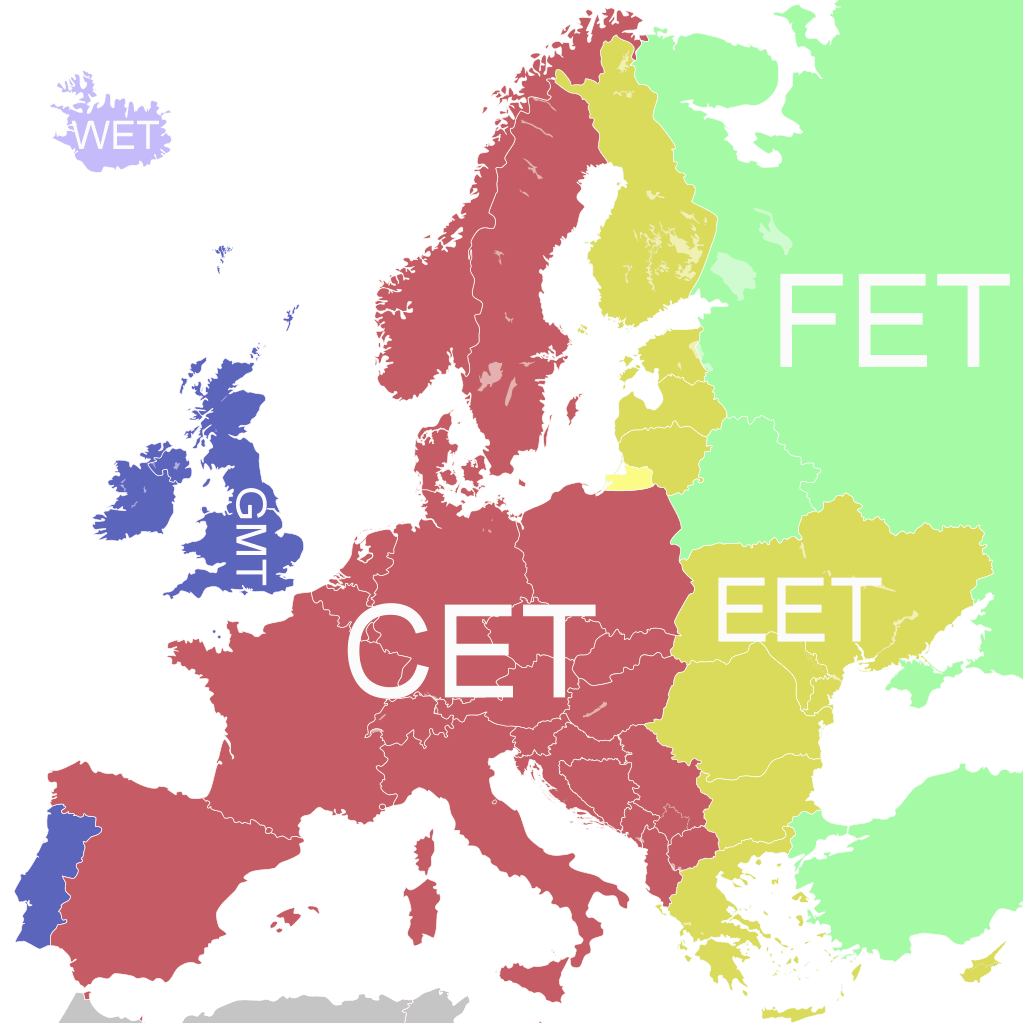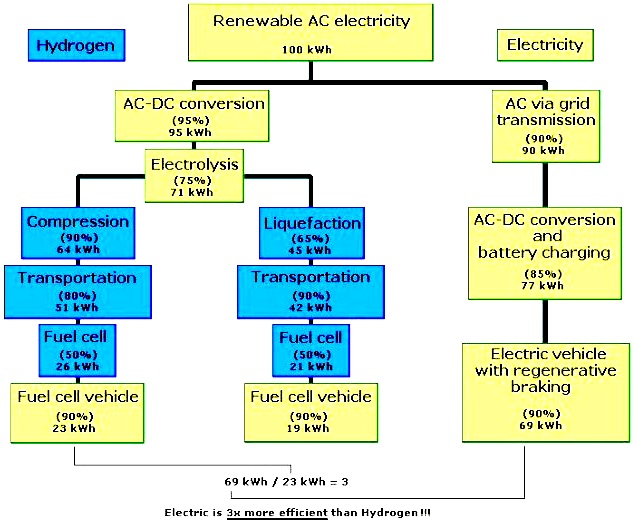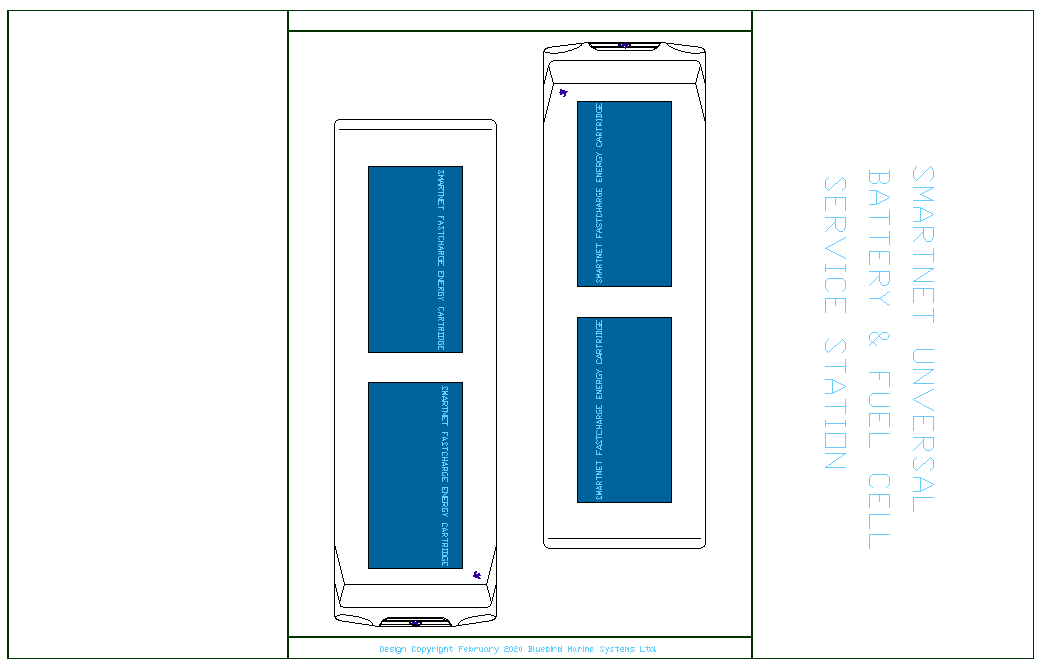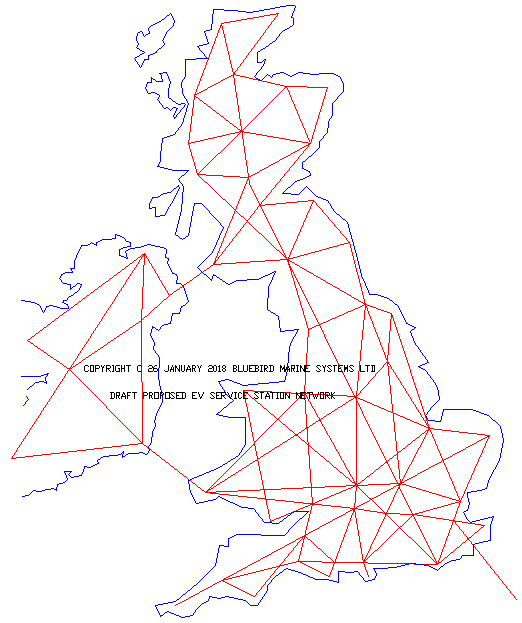|
SMARTNET MOBILITY SECURITY +
Please use our A-Z INDEX to navigate this site where page links may lead to other sites
BATTERIES - COST - STANDARDIZATION - HOME - HYDROGEN - LOAD LEVELLING - PAYD - RANGE ANXIETY - RECOVERY - SERVICE STATIONS
|
|||
SMARTNET SS MODEL - Development in 1:20 scale showing Mercedes articulated trucks within the smarter service station concept. We need collaborative R&D partners to go from this model, through simulations, to full size demonstrators, on an informed basis.
SMARTNET ™ encapsulates several advanced concepts, such that one might lose sight of the features and advantages of what is effectively, a multi-faceted transport infrastructure system based on the creation of a standard energy cartridge format for modern and automated EV designs and smart load levelling for TSOs.
Policies and attitudes are changing. This is a concept that has been sitting on the shelf since 1991, waiting for the right time to file patents and trademarks. Patents only have a 20 year shelf life, hence timing is crucial to allow patrons to recover their investments. If we'd filed in 1991, the patent would have expired in 2011, racking up renewal fees in 20 years of arid policies, heralding unacceptable losses and potential insolvency.
The climate crisis and recent media attention has focused on need, still with a seed investment void, but that is closing as the planet warms. There are only 14 hydrogen filling stations in the UK today. We need around 600,000 versatile stations worldwide, to rid us of fossil fuel reliance. We are not going to make it without flat-pack (quickbuild) service stations.
The concept that follows complements policies such as the Automated & Electric Vehicles Act 2018 and will speed up the transition from diesel/petrol vehicles to EVs, where Europe aims to stop ICE sales by 2030-35.
SmartNet™ is an Electro-mobility and energy storage solution with future proofing by way of an unparalleled ability to transition to and from (or operate as a mix of) battery and hydrogen energy cartridges, flexibly, catering for electric buses, cars, robotaxis and (exceptionally) robotic trucks with compatible (near) instant recharging and refuelling. This may, and we hope that it will, include any other means of storing energy that is known, or might realistically materialize in the future - such as solid state batteries.
A wise man once said: "Don't put all your eggs in one basket."
Where plug-in park & charge cannot realistically provide a transport infrastructure to replace diesel and petrol vehicles; SmartNet™ can, without the need to build additional (traditional) electricity generating stations to cope with the next generations of super fast charge batteries.
A TOUGH EGG TO CRACK - There are insufficient conventional charging points for the numbers of EVs that will be coming onto our roads by 2030. This factor is a major blocker for those who must have the convenience of instant refuelling - would like an EV - but know that buying one now will restrict their mobility.
To make purchase decisions even harder, battery cars are competing with hydrogen cars. SMARTNET removes the need to make that choice where you can drive an electric vehicle on battery or hydrogen cartridges, swapping them at the push of a button - but only if the car you buy in the not too distant future is SMARTNET ready. SMARTNET also eliminates charging downtime via load levelling (time shift) - and cars are cheaper to buy with Pay As You Drive real time billing - you only pay for the energy you use and depreciation, in proportion to your use. You can help us to make this happen by working with us towards a zero emission future.
DRAFT COLLABORATIVE DEVELOPMENT PLAN:
1. Formulate a 'Standard' for vehicle energy cartridges to accept batteries or hydrogen fuel cells.
2. Design a dual purpose (DP) service station for the Standardized energy cartridges for cars & trucks, also to supply plug-in charging and hydrogen gas.
3. Use DP service stations for load-levelling to store off-peak solar & wind electricity to cater for peaks.
4. Make electric cars economical to buy and operate with Pay As You Drive technology future proofing.
EU GRID NETWORK - Conventional charging points would need to be installed at the rate of 288,462 parking spaces per week Europe wide to cater for 150 million vehicles in daily use within 10 years, or 144,230 per week within 20 years. We do not consider such a proposition to be realistic. A more practical approach for long term energy security for transport, is a network of SMARTNET FASTCHARGE service stations. The built in safeguards include load leveling and longer battery life, plus the ability to move to hydrogen fuel as and when the technology is developed, without needing to change vehicles or service stations. It is all planned for with SMARTNET.
The transport sector is responsible for a quarter of the EU's greenhouse gas (GHG) emissions, so drastic changes in the transport sector are required to meet the 90% reduction in GHG emissions set out in the Green Deal. It is, therefore, vital to completely decarbonise the truck sector to meet the EU objectives.
A TRANSPORT, OR A FUTURE ENERGY SOLUTION, OR BOTH?
Well, yes, it is both. It is a two-pronged attack to stimulate technological advances in the face of an emergency situation, hedging bets in the hope that something better comes out of the cauldron - either way.
The climate change (greenhouse gas reduction) targets set by Europe after the COP 21 Paris Agreement in 2015, has triggered considerable release of funding and investment for innovation in battery and hydrogen technology, partly as a means to store solar & wind energy for load levelling and partly to secure electrical energy for transport.
This represents a remarkable opportunity for the energy supply industry, usually slow to move on technology at the best of times - for fear of rocking their dividend boats. But with this formula DSOs might become more profitable by reducing re-dispatch payments.
Un-complicating the permutations using adaptive (smart) versatility will help innovators enter a market that would otherwise be impenetrable. The newcomers might not always present an economic case, but as least they get a shot, while the best solutions will ascend commercially on proof of concept or performance.
This system is the gateway to a hydrogen based economy, should the raw materials for batteries run out, but should be seen as a realistic way of providing electrical energy with all hands to the pumps. For that is what we will more than likely need.
SUPER FAST SILICON TECHNOLOGY - Wow! We like the sound of this. Longer lasting batteries with extra capacity for more range. Great stuff. The only downside is the number of additional generating stations it will take to cope with peak demands at those charge rates. Grids all over the world will collapse, requiring the build of hundreds more conventional generating stations to cope. But is that the solution, or should we time shift the charging of such batteries using SMARTNET load levelling technology. By this means we might make the best use of renewable energy, instead of leaning on fossil fuels. So, bring on the super batteries, we think there is a solution to the problem of peak demand.
ENABLING TECHNOLOGY & FUTURE PROOFING
SMARTNET offers a way to get things moving faster, with flexibility built in to adapt to new storage chemistry, as and when that is developed. The basics of the system is an energy cartridge that is Standardized, by which we mean it will fit over 90% of existing vehicle platforms, with the least possible re-design for auto makers. The aim being to assist the automotive world to avail themselves of the convenience for their customers, that compatible service stations will offer, such as one to three minute recharging/refuelling times.
The same energy cartridges are used to store off-peak electricity for supply during peak demands. The proposed service stations operate as sponges to absorb energy from nature, also supplying to the grid for homes and factories. Because the energy cartridges are Universal, they may be OEM manufactured by dozens of companies across the globe, using mass production to bring the price of storage down.
TRANSPORT LOGISTICS
The logistical challenge transitioning from fossil fuels to generated electricity (aiming at renewable) within the next 10-20 years is staggering. Plug in charging simply cannot cope with larger vehicles.
Why?
Because of the number, and variation in size, of vehicles on the road that need energy - and the fact that despite EU directives from 2014, there remain insufficient compatible charging points in Europe and around the world to secure clean mobility, without needing to build many more conventional generating stations.
SMARTNET is a Long-Term-Solution (LTS) to cater for trucks, buses, vans and cars - and a necessary load levelling system.
DUAL PURPOSE BATTERY STORE - This diagram shows a SMARTNET service facility in plan view, with articulated trucks turning in from a (UK right hand drive) main road, into the service station - passing through for battery swapping - and then exiting back onto the main road. The suggested layout speeds up refills and assists traffic flow in busy cities. This battery storage facility carries 60 standard cartridges, but can carry 96 battery units in the same footprint. Alternatively, a flat-pack station with a smaller footprint can be installed in congested towns. Electricity can be stored in the facility for load levelling, then fed back to the local grid for distribution, to use wind and solar generated energy more efficiently.
As an aid to the electrification of cities for bus based public transport, stations like these would avoid the need to install thousands of individual charging points, meaning that 2030 climate change targets might be met.
HOW MANY VEHICLES ARE THERE?
According to the European Automobile Manufacturers Association (ECEA) There are some 308.3 million motor vehicles in circulation on the EU's roads, that is more than one for every two Europeans. The European Union's motor vehicle fleet counts 268 million passenger cars and more than 40 million commercial vehicles.
Of these around 5.39% (16,617,370) are electric or hybrid, leaving 291,682,630 vehicles either petrol or diesel powered. Both fuels cause global warming and respiratory diseases.
There are 1.3 billion operating vehicles on the planet, and this number will rise above the rate of population growth, as standards of living improve around the world, but lung cancer will also increase in proportion to particulates, if we keep driving fossil fuelled (FF) vehicles. Especially in cities. FF vehicles should carry a Government Health Warning, like that for smokers of cigarettes.
THE SLOW LANE - We all live fast lifestyles. Waiting 30 minutes for rapid charging not only strains the grid, but also damages batteries, and nobody has thirty minutes to waste - best case - worst case 6-8 hours. A truck size battery would take hours to (so-called) rapid charge. It is just not practical. Ignoring for now that there are no charging points along the streets in towns and cities, or at supermarkets.
BATTERY CARTRIDGE FORMAT PROPOSAL - This cartridge format provides 0.24 of a meter cubic capacity. All of these formats can be used in multiples to provide up to 1.92 of a cubic meter capacity. This is one of a number of sizes that we will be evaluating as part of a study we hope to obtain funding for in 2021, or as soon as possible under Horizon Europe Cluster 5 EV infrastructure calls.
Is there a solution ?
Fortunately, our sun provides unlimited radiated energy from hydrogen fusion. We simply need to capture this as solar and wind energy and convert to clean electricity. Then we need to store this energy in a convenient form to provide on demand for vehicle operators. Convenience equals a couple of minutes in our view.
ALTERNATIVE FUEL - is a type of motor energy other than the conventional fuels petrol and diesel. Alternative fuels include electricity, LPG, natural gas (NGL or CNG), alcohols, mixtures of alcohols with other fuels, hydrogen, biofuels (such as biodiesel), etc. (This list is not exhaustive.) Alternative fuels do not include unleaded petrol, reformulated petrol or city (low-sulphur) diesel. The UK does not qualify for EIC funding after Brexit, but is in the running for Horizon Europe R&D funding from July 2021.
UK CLIMATE CHANGE ACT 2008 - EXAMPLE
In the UK the Climate Change Act 2008 combined with other directives aims to phase out the selling of petrol and diesel cars and vans in Britain by 2032. There are no hard targets like the 2008 Act in any other country in the world at the moment (Feb 2020), but some in Europe are aiming at electrification by 2030, banning the sale of ICE vehicles. One of the reasons other countries may not be as committed, is that they do not have a way to achieve this technologically.
The UK is also befuddled. The British Government are at present asking for proposals against 50% match funding. But at the moment there is still some RIA research before then, and the UK do not fund research, especially with Brexit unresolved. In Europe, battery technology is receiving a lot of attention with many RIA calls open for proposal. There are none at the moment for energy storage and distribution. There are many for advanced fuels, presumably hoping to keep internal combustion engines (ICE) in the loop. Though ICE engines are woefully inefficient, hence we wonder at the sense in this, with time being a factor. It is our failure to act in good time that has caused the urgency today.
DISRUPTIVE TECHNOLOGY & MARKET DYNAMICS
Any solution is sure to be seen as disruptive technology on a grand scale, and as such the champions of the system will be swimming upstream against a tide of naysayers and political lobbyists working for oil companies and dyed in the wool petrol-heads in terms of hundreds of motor manufacturers - only now grappling with electric motors hastily shoehorned into engine bays. We see this as a thankless task for any social entrepreneur with limited resources, no matter how excellent the technology, especially so where it will change the dynamics of the market. But auto makers will come to embrace the simplicity of the vehicles, so long as the complexity of the energy infrastructure is overcome for them.
Production lines will have to switch from internal combustion engines to electric motors and petrol stations switch from liquid handling to solid energy storage and handling. They won't like it, because their present investments will be devalued instantly on the stock markets. Or at least that is how they will perceive it.
That is not true of course. Any company that embraces change head on will retain the confidence of investors. History shows us that refusal to move with the times is where the danger is. Like Kodak film versus digital cameras. Traditional film based camera companies folded. Those engaging with the technology opened up a whole new era of possibilities, giving photography to everyone with a mobile phone. Film is replaced with solid-state memory cards.
This proposed system is one of those opportunities in the making, to advance public and private transport. There are none so blind as those who will not see. We hope to clear the fog.
RED FLAG STAGNATION - TECHNOLOGY ASSASSINATION
The auto industry has been on Notice as to the requirement to change to zero emission technology for over 40 years - with little genuine action, only paying lip service to assuage environmentalists.
It is possible to gently phase in electrics within 10 years. The technology exists in terms of batteries, motors and cartridge exchange, they just need a shove with infrastructure and power management - and that is where we come in. SMARTNET also offers versatility for hydrogen and other fuel cells.
Our saving grace is that the EU is demanding solutions, meaning that we may not bear the full brunt of forced change, where the proposed system allows for gradual phase out of ICEs - with profits - that will tend to offset the pain of depreciating existing assets, with profits from new markets.
A failure to move with the times is sure to lead to the demise of sloth companies like Kodak and Timex.
This ties in nicely with the 10 year life span of most vehicles before scrapping. But it does demand a positive mindset concerning the will to change.
THE RACE IS ON FOR A COMPETITIVE EDGE - BUT IS THAT GOOD BUSINESS SENSE?
There are a number of battery swap systems under development at the moment, such as BattSwap, Czech Republic, Palo Alto, California & Deutschland, and NIO and the Kandi robotic exchange systems in China, and PowerSwap in Sweden. Tesla did have cartridge ambitions but appear not to be actively pursuing this goal at the moment - sitting on the fence innovation wise.
But with all the above systems there is nothing to match the performance and versatility of the proposed SMARTNET FASTCHARGE system - and they all use different size and configurations of cartridges, mostly unsuitable for larger vehicles and trucks.
Whereas the economic advantages of such a system could be enormous in terms of the Circular Economy and the Fuel Security, that the EU and many other countries are looking for, where reduced transport costs also means more competitive status on the world stage, compared to countries dependent on expensive oil imports. There are though significant difficulties to overcome, about which SMARTNET has the potential to resolve, the first of which is a high degree of standardization, to suit 90% of manufacturers.
Together with simplicity and reduced set up costs, standardization could turbocharge the electric car revolution - and allow car makers to do what they do best - concentrate on producing superb quality cars, vans and trucks, rather than worry about trying to force brand loyalty. A multitude of formats is likely to confuse buyers and so stagnate sales, increasing the risk for investors.
Standardization of cartridges provides a level playing field in terms of energy availability for customers. There is no point making the finest cars in the world, if there is nowhere to recharge them. Or indeed, if you make the finest cars, but their drivers are stuck on the roadside waiting for plug in charging.
THE NUMBERS - In 2017 Luxembourg had the highest number of vehicles per thousand inhabitants.
At the moment car makers produce vehicles with onboard electrical sockets on the assumption that charging points will be available along our streets and in car parks for every vehicle that covers longer distances. You may have noticed the absence of such charging spaces where you live and work. But, conventional fast charging can replenish around 80% of charge in about 1-2 hours. In our view this is far too slow, and would demand more power generation capacity to cope with peak demands.
There are battery cars with ranges of up to 300 miles, but the cars are incredibly expensive and too heavy, as they lug gigantic cartridges up and down the country, absorbing more lithium and cobalt than needed and raising the total energy bill.
That is if you purchase a battery EV. If purchasing a hydrogen fuel cell EV, the situation is even more problematic infrastructure wise. There isn't much! There are around 50 projects in Europe.
BLOOMBERG EXTRACT 2018 - Electric buses were seen as a joke at an industry conference in Belgium nine years ago when the Chinese manufacturer BYD showed an early model. Suddenly, buses with battery-powered motors are a serious matter with the potential to revolutionize city transport - and add to the forces reshaping the energy industry.
With China leading the way, making the traditional smog-belching diesel behemoth run on electricity is starting to eat away at fossil fuel demand. The numbers are staggering. China had about 99 percent of the 385,000 electric buses on the roads worldwide in 2017, accounting for 17 percent of the country's entire fleet. Every five weeks, Chinese cities add 9,500 of the zero-emissions transporters - the equivalent of London's entire working fleet, according Bloomberg New Energy Finance.
All this is starting to make an observable reduction in fuel demand. And because they consume 30 times more fuel than average sized cars, their impact on energy use so far has become much greater than the than the passenger sedans produced companies from Tesla to Toyota. For every 1,000 battery-powered buses on the road, about 500 barrels a day of diesel fuel will be displaced from the market, according to BNEF calculations. This year, the volume of fuel buses take off the market may rise 37 percent to 279,000 barrels a day, about as much oil as Greece consumes, according to BNEF.
In 1995, Powergen were interested in this technology for buses. Sadly, they were reorganized and oil prices dropped - meaning that development went no further. At that time the Dti in England said there was no future for battery swap stations. As did CARB in the US. It was an opportunity missed, that had to wait until now for climate warming to get to dangerous levels before anyone might again take sufficient notice of the concept, such as to make it worthwhile looking for development partners in terms of risking precious time against business planning and the making of grant applications that had no chance of success due to the perceived lack of commitment on the part of the parties.
The proposed system is ideal for the rapid recharge of buses; passenger service vehicles (PSVs). That could mean clean cities, free of particulates where lung cancer is at its worst. The same cartridge system will work just as well in trucks, where they are both (in effect) heavy goods vehicles (HGVs) variations with parts commonality in terms of axles and chassis members.
MODEL 1:20 - April 6 2020, a model of the service station was under construction (seen above) but was shelved again due to unhelpful policies. We are using plywood for the building and some of the working parts - that cannot be shown due to patent law prohibiting prior publication. The Automated & Electric Vehicle Act 2018, makes it law in England that provision must be made for charging and refuelling of electric vehicles at service stops. This system would more accurately be described as a refuelling point - since the energy exchanges for trucks and cars are virtually instant. The building can be a quarter this size for city locations where space is limited. But for load levelling purposes, the larger the capacity of stored electricity, the more efficient the grid. Copyright photograph © 6 April 2020, Cleaner Ocean Foundation.
BUSES, COACHES & TRUCKS - One size fits all. No need for overhead cables like the trams and trolleybuses of old, and most existing vehicles might be converted. All you need is the service station. These low cost flatpack stations also service vans and cars, while they provide load leveling mobility security.
WHAT IS THE COST PER MILE COMPARED TO PETROL CARS?
At the end of the day, if the cost is about the same, there will be less resistance to going green. Households might swap technology as their existing cars reach the end of their working lives.
There might even be a scrappage scheme to help the move to clean transport. But if we can show an economic gain in real terms, then EVs with SMARTNET technology will have the commercial advantage, as well as the moral high ground, as compared with petrol and diesel powered vehicles.
Higher quantities of standard batteries will mean economies of scale and competition from OEM suppliers - that is likely to mean lower priced energy cartridges for service station operators and utilities.
Another issue, is that with electric car production soon to rise to meet the climate challenge, that the world's lithium mines will not be able to cope. It's not just cars, ships will also need lithium for bulk batteries. Cobalt is likely to be more scarce.
With this in mind it pays to have a reserve plan. We aim to provide that level of reserve.
There is a potential solution. A solution for Battery and Fuel Cell EVs!
Before we explain how we might cater for Fuel-Cell EVs, let us just take a quick look at energy distribution for battery EVs using power from the Grid, as in generating capacity.
INCREASE IN VEHICLE NUMBERS - The number of vehicles needing to be supplied with energy is on the increase year on year.
A problem to overcome if we are to provide electricity for 150,000,000 million vehicles on the move (roughly half of those in use in the EU), is peak demand.
Most people would drive to work, park and plug in, if there were charging points where they work. That would give us a peak at around 9 o'clock in the morning. The biggest peak being Central European Time (CET). Another peak would be when returning home and plugging in - a smaller peak, because most users will not have home charging.
Without Load-Leveling the EU (and other countries) would need to build more generating stations in the short term to cope with the added demand. Many would be overproducing much of the time on tickover, leading to inefficiencies that should be avoided. This is also a problem with renewable generation, even where they might feather turbines, etc.
By using SMARTNET service stations, peaks tend to be smoothed out, because of an intelligent charging cycle and a bank of cartridges to draw on. In addition, as implementation proceeds, we might introduce hydrogen fuel cell cartridges, another way of offsetting peaks.
Load leveling is just as important once all the coal and oil fired electricity stations are replaced with clean turbines and solar farms, because the sun does not always shine and the wind always blow.
Battery energy stores like SMARTNET, whether intended for electric vehicles or as power for local communities, can feed power back into the grid, normally and in emergency situations.
So, now you need to know a bit about the universal cartridges.
How are we able to use hydrogen as a fuel in a battery cartridge?
Before we answer that, you should know that the hydrogen production and conversion chain, offers about 30% percent in terms of overall efficiency from wind turbine or solar farms, converted to hydrogen gas via hydrolysis, to a safe hydride combination - as compared to battery storage @ about 70%. But it is another string to our eco bow - as in 30% of the theoretical 100% free energy, minus drive-train efficiencies, etc.
TIME ZONES - Europe spans seven primary time zones (Coordinated Universal Time or UTC from UTC−01:00 to UTC+05:00), excluding summer time offsets. Four of them can be seen on the map.
BATTERIES AND HYDROGEN FUEL CELLS
In the move to zero carbon transport, there is as yet no system to cater for fuel cell and battery recharging of electric cars, vans and trucks, to supply energy on a nationwide scale with load leveling capability for the generating utilities, also with intelligent logistics built in for energy companies to be better able to manage demand.
When choosing an electric vehicle, buyers are faced with a choice of battery or fuel cell technology, but we say why not both. Why not a system where your vehicle can use battery or hydrogen fuel cells and still enjoy instant energy exchanges at the same service stations as other EV operators; interchangeably.
The why not, is because the system has not yet been developed for lack of funding. The system was conceived many years ago and shelved because it was too far ahead of its time, and way too risky a venture as proved by Better Place (see below). Many a social entrepreneur has been bankrupted for trying to bring to market an invention, where the market was not yet ready for it.
Possibly, with climate change now being something on the United Nation's agenda, as well as the search for a Circular Economy, the time may be right, or at least ripening toward imminent demand from concerned citizens. That we'll have to wait and see. Blockers could be vested interests, Cowboy politicians, and Red Flag policies.
This (proposed) concept protects, to a large extent, the prospective purchaser, where the market is evolving and nobody is yet sure what the future may bring. It thus has an inbuilt element of future proofing. At the moment the only country where you might purchase a fuel cell car is Japan, and even so, there is an infrastructure problem.
EUREKA - Hydrogen is the most abundant element in the universe. With the "green-energy" craze and talk of powering our future oil-free economy on hydrogen, it has received much attention in the last few decades. Learning about this potential fuel of the future is important and interesting, but not without snags, and these are for anyone to seek to overcome. Don't forget the bean counters. It's all down to the money!
SAFE HYDROGEN STORAGE
Hydrogen has a history of being unsafe as illustrated by the Hindenburg disaster of 1937. One way of transporting and using the gas is as a super-cooled liquid, but this requires high pressure, cryogenic storage cylinders onboard a vehicle. Metal (nickel) hydride storage systems have proved to be too heavy.
We are not ruling out cartridges with liquid hydrogen storage, but there are issues to overcome. We'll keep an open mind - where the proposed cartridges might incorporate cryogenic cylinders - if that is how the market develops.
Another way of using hydrogen is via a process that can trap a chemical hydride inside a nano-porous polymer such as polyamide, like a sponge, that speeds up the process of hydrogen release at reduced temperatures. These materials can be cycled many hundreds of times using ammonia borane as the hydride recharge. The resulting material looks like cotton wool and is safe to handle and is lightweight.
This material will fit into the Universal cartridge and provide excellent power to weight ratios. A hydrogen cartridge will also (optionally) incorporate fuel cells to account for depreciation. The result is a cartridge that equals or exceeds the energy storage of a battery based cartridge. Both types of storage medium are designed to be compatible with the SMARTNET FASTCHARGE service stations.
HYDROGEN SPONGE - A polymer tissue is soaked with a hydride to store hydrogen gas safely as fuel. Fuel cell cartridges are packed with this tissue. The cartridges are identical in size to the battery cartridges.
UNIVERSAL CARTRIDGES
Will these cartridges fit in smaller cars?
To test out the concept of size and fitment, students were shown how to weld steel and cut wood, to produce a little electric two-seater that is only 300mm longer than a Smart car. The vehicle was only taken to bare frame stage, but was fully operational with Lynch DC electric drive motors and Curtis speed controller. Hence, a basic electric vehicle.
A steel space-frame chassis was made to allow a battery cartridge to be power loaded in and out in under 80 seconds. The body was built from recycled timber scavenged from the workshops.
As part of any proposal to develop the concept, cartridges of a standard size will be fitted into at least one production vehicle, representative of the modern hatchback generation. Cars like the BMW i3 and Tesla S need very little modification to accept the proposed system.
BATTERY CARTRIDGE FORMAT - The starting point for working out compatible physical dimensions and energy capacity was this suggested size. The design would be modified once participating manufacture's requirements have been incorporated. This slimline format provides 0.2 of a meter cubic capacity. For trucks they can be used in multiples to provide up to 1.6 of a cubic meter capacity. Enough for even Elon Musk's road trains. Other size options are looking more promising.
HYDROGEN FUEL CELL CARTRIDGE - It looks like a battery cartridge. It performs like a battery cartridge. It stores energy like a battery cartridge, but it is a hydrogen fuel store and fuel cell cartridge combination. Where lithium and cobalt raw materials may limit the production numbers of EVs as green motoring becomes the norm, hydrogen in a safe format might offer unlimited possibilities. The concept is compatible with SMARTNET FASTCHARGE service stations. NOTE: This is just a concept, not a product yet. More development is needed to before mass production could be entertained.
ZERO CARBON MOTORING ON RENEWABLE ENERGY
The European Union may benefit from the development of such a system inasmuch as reducing their carbon footprint, aiming for a sustainable transport system that might progress from battery energy storage to a safe form of hydrogen storage. In the process reducing their oil dependency.
Electricity that is generated offshore by wind turbines, and onshore with solar farms, could power all of the vehicles in Europe. This is sustainability at its best.
The product would be exportable as a complete service network along with vehicles that are compatible, with cooperation from EU auto makers.
MOBILITY & TRANSPORT - According to EU directives we should have electric vehicle charging points in situ by the end of 2020. Realistically, is that going to happen? Not a chance! There is a slight possibility that shoreside electricity supplies might make it by 2025.
Without the requisite number of charging points to cope with 300 million vehicles in Europe, we will have a serious energy requirement deficiency as defined by the International Energy Agency - if that is - the aim is to clean up our act to try to beat global warming.
SMART
NETWORK
Energy cartridges are to be specified to be compatible with the voltages and amperages to suit most electric vehicles today. But that is the starting point to kick start a change to universal pattern service stations that are economical to install. New vehicles would be built around the universal pattern, that would allow car makers to express themselves and develop their marques in the same way as they have always done.
Cartridges would be identified and logged into the system with a full charge (service) history being recorded.
The concept may be suitable for EIC support in the interest of accelerating the technology and providing practical alternatives.
Bluebird Marine Systems Ltd constructed a bare electric vehicle in 2014, that has a cartridge system for energy exchanges. This would be an ideal starting point to develop the system for other road vehicles.
This company would then trade as a for-profit concern. Prior to this it traded not-for-profit. As a for-profit concern, the company could provide equity in return for additional finance.
SMARTNET™ FLATPACKS - These outline diagrams (plan and end elevation) show how a Universal EV service station might look. The existence of such facilities may have the effect of boosting sales of EVs that are compatible. We would encourage every car maker to consider voluntarily including at least one vehicle in their range in any future development programme. The system needs cars, vans and trucks for a sustainable future. A medium size truck is shown in these drawings.
The proposed EV forecourt offers between 7.68 - 15.36MWh of energy storage with a capacity of between 48-96 battery cartridges on a continuous charge cycle. Five of these stations (76.8MW) could recharge (refuel) up to 10 trucks or cars a minute during peak demand.
Using the 5 forecourt model, towns of average size could be supplied with energy for transport. Cities would need proportionally more.
During rush hour, up to 300 vehicles might be serviced in one hour. The system works best if recharging is a dedicated action, A bit like a drive-thru for fast food with PAYD automated billing. The stations need not be manned, being robotically autonomous in operation. They could (and should) be solar powered from panels on the roof, the solar power being to operate the machinery, not supply the energy for cartridges.
The truck shown in these CAD drawings is 3.55 wide x 3.5 high x 7.7M long (8 x 11.5 x 25 feet). This station could accommodate trucks 4.46M (14.77 feet) high as shown, or with a raised roof, almost any truck currently on the market - though longer thinner trucks are more fuel efficient.
During an eight hour day 2,400 trucks might be serviced using five forecourts on the assumption that we start every morning with 96 x 5 = 480 slow charged cartridges from off-peak supplies. This load leveling or time-transfer feature is only possible with such service stations.
SERVICE STATIONS
The support for EVs, battery or fuel cell, would come in the form of a flat-pack service station. A standard unit could be used in multiples. In connection with the development of this concept it is proposed that a 1:20 scale working model is constructed as a proof of concept. This is to test the control electronics and delivery mechanism, prior to the construction of a full size unit.
Before the construction of any full size service facility, a cartridge would be developed that is of a suitable capacity and dimensions to be compatible with approximately 90% of the manufacturers current models. A survey would need to be conducted to measure wheelbase, track and floorpan hard-points, to establish a formula to suit any manufacturers wishing to cooperate. Perhaps with the aid of Horizon Europe funding. They need to get calls right if they are going to incentivise applicants to give them the technology they need from SMEs, who cannot afford to compete otherwise. And why should they face insolvency for having an idea, that the establishment will resist.
MARKET SHARE - We need a system where light commercial vehicles and trucks are practical to operate.
CLIMATE EMERGENCY BUSINESS PLAN
The aim of this project is not to undermine the competition, but rather to bring them together to provide a path to introducing a workable system that is practical and economical, such as to complement future EV development, working with as many manufacturers as may express an interest, to define a speedier way forward.
For that we need the hardware, or at least evidence that the cartridge format and station design is a live project, with the design in progress leading to a full size demonstrator.
Once a prototype Service Station is built, it is hoped that vehicle producers would want to engage positively in helping the Cleaner Ocean Foundation (COF), or other specially formed group (cooperative), to include any refinements in a/the standard cartridge format, without the need for legislation requiring cooperation.
This was the case in California (California Air Resources Board [CARB]), where manufacturers had to offer an EV in their range, or were prevented from selling cars in the State. Though this was an effective way of getting car makers to produce EVs, as today, there is no comprehensive infrastructure support for changing to electric motoring in California. And that is because the motor makers challenged the requirement and California gave in. US Vehicle OEMs are therefore the guilty ones, in global warming terms, as with cargo vessel operators, for belching out the greenhouse gases that have caused our present crisis.
The COF approach is the reverse, we want to develop the supporting infrastructure to nurture and boost EV acceptance. We see a universal cartridge format as being an obvious way forward, dependent on a majority of manufacturers agreeing on a base platform - side by side with regular charging and gas delivery.
If this were to become a stumbling block in true red flag fashion, then at that point legislation could require manufacturers to cooperate to define a standard pattern and technical specification, from which point progress might be made. Meantime, COF would survey all mass produced vehicles to define a Standard in absentia.
There would need to be strict time limits for compliance and penalties for unreasonably delaying any agreed schedule. As we say, we would prefer cooperation to be voluntary and in good faith. It should be that car makers are looking for this very solution - and they probably are - but more likely looking at everything else first, costing the planet dearly.
An essential element of the proposed system is a means to reduce the cost of EV ownership and operational costs. We aim to develop a system where energy cartridges are supplied and paid for in smaller bite size chunks, such that motorists pay for energy and servicing as they drive. It's a bit like the British PAYE system that the Government use to collect income tax. This is called Pay As You Earn. It prevents workers from being landed with a giant tax bill that they could not afford to settle.
The business plan will include lobbying and informing policy makers as to progress, and negotiations with the 10 European manufactures, as a first port of call, though any manufacturer, anywhere in the world is more than welcome to engage with BMS, it is just the we have to start somewhere - and this is after all a European initiative.
Working together will ensure that car makers make the best of their present investments, We must all row this boat in the same direction. If half row against progress, the boat will stand still. Global warming will continue and planet earth will suffer as a result.
Ultimately, the developed technology should be made available to all car makers on equal terms, once the development costs have been absorbed.
Another feature of the SMARTNET FASTCHARGE system is that with standard cartridges, if you were to run out of energy during a journey, any of the emergency services (such as the AA, Green Flag and RAC in the UK) would be able to provide you with a fully charged cartridge, and you'd be on your way in minutes. The unique loading mechanism is the only cartridge swap system that allows roadside exchanges. This quality also allows gradual build up of a customer base, before the need for service stations. Something that Better Place did not work into their business model.
Home charging from any plug in station or roadside charge points is as per any other cable and socket connected system. The intelligent billing system allows for depreciation only payments.
The system we are proposing is ideal for local entrepreneurs to buy in as Franchise operators and be their own bosses. Indeed, this may be one of the best ways of creating an infrastructure quickly, where there might be resistance from the establishment. The establishment being energy companies bound by agreements with petroleum companies, and motor companies bound by agreements with petrol companies.
Energy companies that are tied in with coal and oil producers may also operate Red Flag policies. We will not include nuclear power plants in this discussion. Nuclear and coal power stations should be banned.
1899
PORSCHE ELECTROMOBILES - Many famous engineers have looked at using cartridges
for EV's, concluding that the range of lead-acid accumulators was not good. At that point the good professor looked at putting an engine and generator set onto his electric cars to create the world's first true hybrid - and the Semper Virus
(above) was born, the predecessor to the Toyota Prius and BMW i3.
PATENT, DESIGN & COPYRIGHT PROTECTION - IPR
Patents, Design rights and Trademarks would be either applied for at each breakthrough, or extended from existing rights, once the formula is confirmed. This is to protect the interests of the European Union (if they are the seed source), cooperating concerns like generating utilities, motor manufacturers and third party investors.
The income from royalties would be ploughed back into vehicle, cartridge and network development, such that vehicles and energy storage solutions might be produced and sold in every country in the world - opening up new markets to replace old markets, such that car makers remain profitable and can contribute positively to the development of a sustainable society.
The essential element in all this is a high speed vehicle energy transfer mechanism, compatible with a network of service stations to be managed by computers by way of an artificial intelligence, such that multiples of energy companies might sell their power through the grid network as it is established, future trends predicted and accommodated.
PRIOR ART
1900 - Cartridges as an energy transfer medium were first used by Professor Porsche in the early 1900s. He then increased range with petrol dynamo and gave up when petrol cars got electric starter motors.
1990 - Buses with cartridge exchange were used at Kobe, Japan, in the 1990s.
2009 - The next serious attempt to perfect the concept came with Shai Agassi's 'Better Place' system, using service stations in Denmark and Israel, but only for batteries as the energy storage medium. The service stations were expensive and the loading mechanism complicated, but were still planned for California, but the company folded in 2013.
2013 - Elon Musk came next with a Tesla S production vehicle modified to swap cartridges. Once again the underground (or above ground stage) required expensive installations, and this system was only for battery cartridges. Tesla is now concentrating on rapid charge stations.
The proposed SmartNet system aims to resolve the issues identified from the Better Place and Tesla systems, by incorporating fuel cells in standard cartridges as future proofing and reducing the buy in cost with networked flat pack service stations that any utility, supermarket or energy company might operate.
GRID PLANNING - These diagrams show a simplified version of a grid network for SMARTNET service stations. As yet, no study has been conducted on Europe, to be able to calculate the number of units required and where they might be situated. Mind you, the locations might simply replace existing fossil fuel stations gradually. Side by side at first as extensions, with fossil fuel closures as demand for ICE filling stations tails off.
TECHNOLOGICAL COMPASS - It is the part of a wise man to keep himself today for tomorrow, and not to venture all his eggs in one basket. SMARTNET allows for change in technology. You don't have to bet on batteries or fuel cells. Include both in a diverse asset portfolio - and watch you egg hatch into a solution.
FET - FUTURE EMERGING TECHNOLOGIES PATHFINDER (PILOT)
The EIC Pathfinder Pilot comprises FET-Open and FET-Proactive and offers grants of up to €4 million to promote collaborative, inter-disciplinary research and innovation on science-inspired and radically new future technologies. These grants are for consortia of at least 3 entities from 3 different Members States and associated countries
GRAND CHALLENGES - UK
UK Industrial Strategy sets out Grand Challenges to boost the industries of the future, ensuring that the tackles major global changes, improving people’s lives and the country’s productivity. 3 of these challenges are: Artificial Intelligence and data, clean growth and the future of mobility.
EIC EUROPEAN INNOVATION COUNCIL ACCELERATOR (PILOT)
The EIC Accelerator (previously know as SME Instrument) is part of the European Innovation Council (EIC) pilot that supports top-class innovators, entrepreneurs, small companies and scientists with funding opportunities and acceleration services.
The idea is to help innovations leapfrog development hurdles to bring onto the market leading edge technology and business models that could drive economic growth, even where existing businesses might resist due to perceived competitive advantage, against present investments in plant and machinery.
EIB EUROPEAN INVESTMENT BANK LOCAL ENERGY ASSISTANCE
ELENA is a joint initiative by the EIB and the European Commission under the Horizon 2020 programme. ELENA provides grants for technical assistance focused on the implementation of energy efficiency, distributed renewable energy and urban transport programmes. As such, the scheme may be applicable to SMARTNET FASTCHARGE.
CONTACTS
Bluebird Energy Systems (SME) PIC No: 895922168
Cleaner Ocean Foundation (Not for Profit) PIC: 915580382
LINKS & REFERENCE
https://ec.europa.eu/info/funding-tenders/opportunities/portal/screen/opportunities/topic-details/lc-gv-09-2020 https://ec.europa.eu/digital-single-market/en/fet-proactive http://www.wealdendistrict.com/Cimate_Change/Electric_Vehicles_Infrastructure/CAP_Electric_Vehicles_Infrastructute_Climate_Action_Plan.htm https://www.acea.be/?/statistics/tag/category/vehicles-in-use https://ec.europa.eu/easme/en/section/sme-instrument/eic-accelerator-sme-instrument-funding-opportunities
BATTERIES - COST - STANDARDIZATION - HOME - HYDROGEN - LOAD LEVELLING - PAYD - RANGE ANXIETY - RECOVERY - SERVICE STATIONS
Please use our A-Z INDEX to navigate this site
|
|||
|
This website is provided on a free basis as a public information service. copyright © Climate Change Trust 2021. Solar Studios, BN271RF, United Kingdom. PAYD™ SmartNet™ and SmartGrid™ are trade names belonging to the CCT.
|
